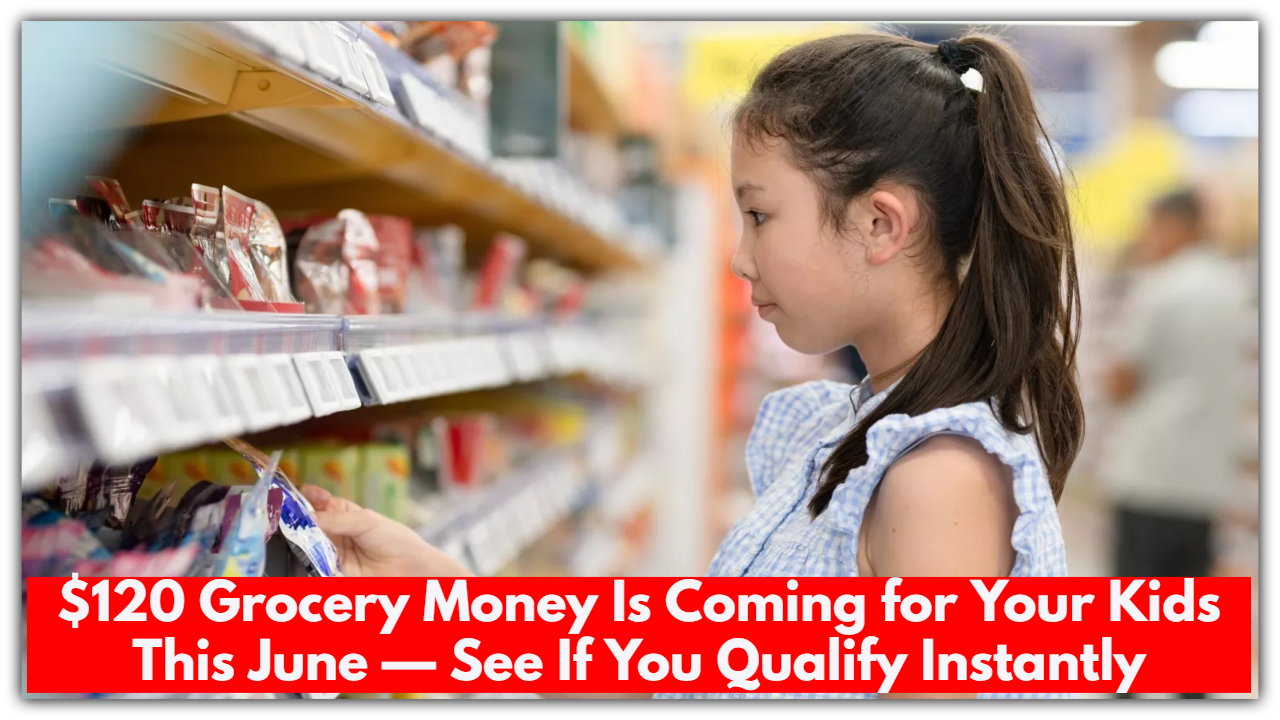$120 Grocery Money Is Coming for Your Kids This June — See If You Qualify Instantly
If you’re raising kids, you already know how expensive summer can get — especially when school’s out and those free school meals stop. Grocery bills go up, snacks disappear in a flash, and suddenly you’re spending way more just to keep the kitchen stocked.
That’s where the Summer EBT program, also called SUN Bucks, comes in. Starting June 2025, families with eligible children can get $120 per child to help with food costs over the summer.
It’s real. It’s happening. And here’s how to make sure you don’t miss out.
So, What Is This $120 Summer EBT Payment?
The Summer EBT (SUN Bucks) program is a new, permanent federal benefit designed to help families cover food costs when school is out and meals aren’t provided.
Each eligible child will get $120 total for the summer, usually split into three monthly payments of $40 — one in June, one in July, and one in August.
The money gets loaded onto an EBT card (the same type used for SNAP/food stamps). If you’re already getting benefits, it might show up on your current card. If not, your state will mail you a new one.
You can use the money just like regular SNAP benefits — at grocery stores, major retailers, and farmers markets that accept EBT.
Who Qualifies for the Money?
Your child is automatically eligible if they:
-
Are already getting SNAP, Medicaid, TANF, or FDPIR
-
Get free or reduced-price school meals
-
Go to a school that participates in the National School Lunch Program
Not sure if you qualify? You can still apply if your household income is under 185% of the federal poverty line — about $45,000 per year for a family of three. Each state has its own application process, so be sure to check your state’s website.
Even if your child doesn’t normally get benefits during the school year, you could still qualify based on income alone.

When Will the Money Arrive?
Most states begin sending out the first payments in June 2025, though a few started early in late May, and others may roll out later in July depending on the state.
Here’s how it’s working in a few places:
-
Tennessee started sending $120 one-time payments around June 13
-
New York began issuing payments on June 18
-
Michigan started deposits in late May
The schedule may vary depending on your state and whether you’re already enrolled in other benefits.
How Will You Get the Money?
-
If you already use an EBT card for SNAP, the payment might be added to that same card.
-
If your child is eligible but you don’t have SNAP, your state will probably send a new EBT card just for this program.
-
In most states, the money will come in monthly payments. Others might give you the full $120 in one deposit.
You can use the funds just like you’d use SNAP — at stores, markets, or anywhere else that takes EBT.
What You Need to Do
-
Already on SNAP or free school meals? You likely don’t need to do anything — the money should show up automatically.
-
Not on benefits but think you might qualify? Go to your state’s Summer EBT or SUN Bucks site and apply.
-
Use the money on time. Most states require you to spend the funds within about four months or it disappears from the card.
Why This Program Matters
Summer can be one of the hardest times for families trying to stretch a budget. School’s out, the fridge is always being raided, and the cost of food isn’t exactly going down.
The Summer EBT program helps bridge that gap — quietly, simply, and without a ton of paperwork. It’s not flashy, but for many families, it makes the difference between getting by and really struggling.
Watch Out for Scams
Just a quick heads-up — if anyone calls or messages you asking for your personal info or bank account to “release” your payment, it’s a scam.
-
You never have to pay to apply or get the benefit.
-
Only use official state websites.
-
No real program will ask you for your Social Security number or banking info over text or email.
This program isn’t a bonus or a stimulus check — it’s about helping kids eat during the summer, plain and simple.
If your child qualifies, the $120 could really ease some of that pressure. It might not cover everything, but it helps — and every bit counts right now.
Want help finding your state’s website, checking if you’re eligible, or walking through the application? Just say the word. I’ve got you.


Comments are closed, but trackbacks and pingbacks are open.